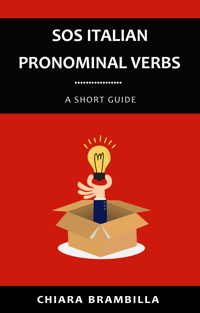
Italy without hand gestures is like pasta without sauce – technically possible, but missing the essential flavor that makes it authentically Italian. But here’s what your Italian textbook didn’t tell you: some of those expressive hand movements you’ve been admiringly watching could land you in seriously hot water if used incorrectly.
As someone who’s spent years teaching Italian to foreigners, I’ve witnessed countless cultural mishaps that could have been avoided with a simple gesture guide because the reality is that Italian hand gestures are a minefield of potential embarrassment.
Why Italian Gestures Matter More Than You Think
Italians don’t just speak with their hands – they think with them. Research shows that when Italians are prevented from using their hands while speaking, their verbal fluency actually decreases.
Understanding Italian gestures isn’t just about cultural appreciation; it’s essential for truly comprehending Italian communication. But here’s the catch: Italian gestures aren’t universal. What’s hilarious among friends could be insulting to your boss. And some gestures that look innocent to foreign eyes carry meanings that would make your Italian grandmother reach for her wooden spoon.
The Danger Zone: Gestures That Could Ruin Your Day
1. The “Corna” (Horns) – Handle With Extreme Care
You know that rock-and-roll hand sign where you stick out your index and pinky fingers? In Italy, this is the “corna,” and it’s not about music. Traditionally, it’s used to ward off the evil eye or bad luck. But point it at someone? You’ve just accused them of being cheated on by their spouse.
Safe usage: Point it downward or away from people. Danger zone: Never point it directly at someone unless you want to start a fight
2. The “Mano a Borsa” (Purse Hand) – Avoid the Tourist Trap
This is the gesture you see in every Italian stereotype: fingertips pressed together, hand moving up and down. While not deeply offensive, overusing this gesture screams “tourist” and can make you look ridiculous. Tourists think it means everything from “delicious” to “perfect,” but it actually means “What are you talking about?” or “What do you want?”
The reality: It’s a question gesture, not an expression of appreciation
Better alternative: Use it sparingly and only when actually asking “what?”
3. The “Gesto dell’Ombrello” (Umbrella Gesture) – The Nuclear Option
Bend your arm at the elbow, make a fist, and slap your bicep with your other hand. Congratulations, you’ve just made one of the most offensive gestures in Italian culture. This is roughly equivalent to giving someone the middle finger, but with extra aggression.
Never use this: Unless you’re prepared for serious consequences
Safe Gestures for Beginners
Not all Italian gestures are dangerous territory. Here are some safe options that will enhance your communication without risking offense or making yourself look ridiculous:
The “Quanto Costa?” (How Much?) – Rub your thumb and index finger together. Universal, safe, and useful for shopping.
The “Perfetto” (Perfect) – Touch your index finger to your thumb, forming an ‘O’ shape. Great for expressing satisfaction with food or situations.
The “Non Lo So” (I Don’t Know) – Shrug your shoulders while turning your hands palms up. Honest, humble, and completely inoffensive.
The Learning Process: From Gesture Novice to Natural
Don’t let fear of making mistakes prevent you from engaging with Italian gesture culture. Italians are generally understanding when foreigners make innocent errors. The key is approaching gestures with the same respect you’d give any other aspect of Italian culture.
Start by observing before participating. Watch how Italians use gestures in different contexts – at the market, in restaurants, during casual conversations. Notice the subtleties: the speed, the intensity, the accompanying facial expressions.
Your Gesture Survival Strategy
- When in doubt, keep your hands still – Better to under-gesture than to accidentally offend
- Ask Italian friends to correct you – Most Italians love sharing their gesture knowledge
- Practice in low-stakes situations – Perfect your technique in casual conversations before important meetings
- Watch Italian films – Pay attention to gesture usage in different social contexts
Conclusion: Gesturing Your Way to Authentic Communication
Italian hand gestures are like Italian wine – complex, nuanced, and potentially dangerous in the wrong hands. But when used correctly, they transform your communication from tourist-level Italian to something approaching authentic expression.
The goal isn’t to gesture exactly like an Italian – that takes years of cultural immersion. The goal is to gesture respectfully, avoiding the major pitfalls while gradually incorporating safe, appropriate movements that enhance your communication.
Remember: Italians appreciate effort over perfection. Show respect for their gestural traditions, learn from your mistakes, and don’t be afraid to ask questions. Your Italian friends will be delighted to share this essential aspect of their culture with someone who cares enough to learn it properly.
If you found this article useful, don’t forget to share it with the world and to like our Facebook Page!
Credits:
Image by Gemini





 Why Magari Is the Most Italian Word in the World
Why Magari Is the Most Italian Word in the World
